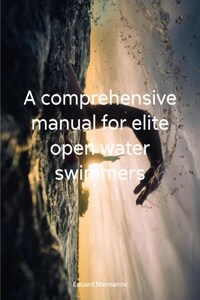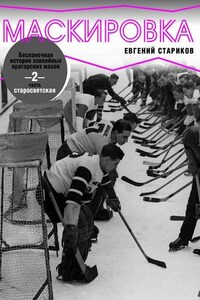A comprehensive manual for elite open water swimmers
Table of Contents:
Chapter 1: Introduction
♦ The Importance of Open Water Swimming
♦ Goals and Objectives
Chapter 2: Training Principles
♦ Periodization and Season Planning
♦ Individualized Training Plans
♦ Dry-land Training
♦ Nutrition and Hydration
Chapter 3: Technique and Skills
♦ Open Water Specific Techniques (drafting, sighting, turning buoys)
♦ Stroke Mechanics
♦ Starts and Turns
♦ Navigating Currents and Waves
Chapter 4: Race Strategy
♦ Pacing Strategies
♦ Positioning and Drafting
♦ Feeding and Hydration During Races
♦ Handling Unpredictable Conditions
Chapter 5: Mental Preparation
♦ Goal Setting
♦ Visualization and Mental Imagery
♦ Coping with Race Anxiety
♦ Developing Mental Toughness
Chapter 6: Equipment and Gear
♦ Wetsuits vs. Swimsuits
♦ Goggles and Caps
♦ Safety Gear
♦ Technology and Wearables
Chapter 7: Open Water Safety
♦ Assessing Environmental Conditions
♦ Swimming in Different Types of Water Bodies (oceans, lakes, rivers)
♦ Emergency Protocols and First Aid
Chapter 8: Recovery and Injury Prevention
♦ Importance of Recovery
♦ Techniques for Recovery
♦ Injury Prevention Strategies
♦ Dealing with Common Swimming Injuries
Chapter 9: Nutrition and Hydration
♦ Pre-Race Nutrition
♦ During-Race Nutrition
♦ Post-Race Recovery Nutrition
♦ Hydration Strategies
Chapter 10: Monitoring and Performance Analysis
♦ Data Tracking and Analysis
♦ Using Technology (GPS, heart rate monitors)
♦ Collaborating with Coaches and Sports Scientists
Chapter 11: Career and Lifestyle Management
♦ Balancing Swimming with Life
♦ Sponsorships and Financial Considerations
♦ Post-Swimming Career Planning
Chapter 12: Resources and Support
♦ Coaches and Training Staff
♦ Sports Medicine and Physical Therapy
♦ Sports Psychology
♦ Support from Family and Friends
Appendices
Chapter 1: Introduction
1.1 The Importance of Open Water Swimming
Open water swimming is a unique and challenging discipline within the world of aquatics. Unlike pool swimming, open water events take place in natural bodies of water such as oceans, lakes, rivers, and even channels. It demands a combination of physical fitness, mental resilience, and a deep understanding of the aquatic environment.
Elite open water swimmers are athletes who have honed their skills and abilities to compete at the highest levels in this demanding sport. They tackle races of varying distances, often navigating through unpredictable conditions, tides, currents, and even marine life. Success in open water swimming requires not only exceptional physical prowess but also the ability to adapt and strategize in the face of ever-changing challenges.
1.2 Goals and Objectives
The primary objective of this manual is to provide elite open water swimmers with a comprehensive resource to enhance their training, performance, and overall understanding of the sport. It encompasses various aspects of open water swimming, including training principles, technique, race strategy, mental preparation, safety, equipment, nutrition, and more.
♦ Developing Skills: Elite open water swimmers aspire to master a wide range of skills, from efficient stroke mechanics to expert navigation in open water conditions. This manual aims to guide swimmers in refining these skills to the highest level.
♦ Optimizing Training: Training for open water swimming requires careful planning and periodization. Elite swimmers must understand how to structure their workouts and conditioning routines effectively. This manual provides insights into training principles and program design.
♦ Race Success: The ultimate goal of elite open water swimmers is to perform at their best during races. Strategies for race preparation, pacing, and tactical decisions are discussed to help swimmers excel on the competitive stage.
♦ Safety: Open water swimming carries inherent risks, including exposure to natural elements and potential encounters with wildlife. Understanding and mitigating these risks is paramount for the safety of the athlete. This manual provides guidance on safe open water practices.
♦ Holistic Approach: Success in open water swimming extends beyond physical fitness. Mental preparation, nutrition, recovery, and lifestyle management are integral components of an elite swimmer's journey. This manual explores these aspects comprehensively.
It's essential to note that elite open water swimmers are constantly evolving their approach to the sport. This manual serves as a foundational resource, but the guidance within should be integrated with personalized coaching and the latest research and developments in the field. The journey to becoming an elite open water swimmer is demanding, but with the right knowledge and dedication, it can lead to extraordinary achievements in the world of aquatic sports.
Chapter 2: Training Principles
2.1 Periodization and Season Planning
Periodization is a fundamental concept in the training of elite open water swimmers. It involves dividing the training year into distinct phases, each with its own focus and objectives. Effective periodization ensures swimmers peak at the right times and avoid burnout.
It is based on the principles of multilateral development, specialization, variety and long-term training. Out of those, the first three are necessary for optimizing physiological factors, whereas long-term planning provides the athlete during with gradual improving of physical performance in the course of time. In the periodization, the training process is distributed in time intervals, the magnitude of which may range from days to weeks, months or even years. During each of these time intervals, a particular element of performance is accented (e.g physical fitness, technique etc.) and time intervals must respect the main tasks of ATC macrocycle – performance development, stabilization or tapering. The original idea of periodization is the basis of training process planning for all age categories or performance levels.
Key elements of periodization include:
♦ Macrocycle: The annual training plan, typically divided into preparation, competition, and transition phases.
♦ Mesocycle: Several weeks to a few months within the macrocycle, each with specific goals. This includes base training, strength development, speed work, and tapering.
♦ Microcycle: Weekly training cycles that specify the daily workouts, volume, and intensity.
2.2 Individualized Training Plans
Elite open water swimmers benefit from individualized training programs tailored to their strengths, weaknesses, and competition schedules. Coaches collaborate with swimmers to design programs that include:








